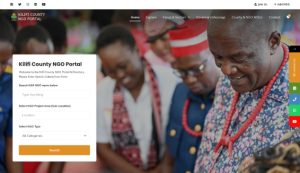Ensuring Sustainable Development through Rigorous Evaluation
The Kilifi County Department of Water, Environment, Climate Change & Forestry offers Environmental Impact Assessment (EIA) services to ensure that development projects within the county are conducted in an environmentally responsible and sustainable manner. Our EIA process is a critical tool for identifying potential environmental impacts of proposed projects and mitigating negative effects, thereby safeguarding the natural environment and promoting sustainable development.
Key Features
1. Comprehensive Environmental Evaluation
Baseline Environmental Studies
We conduct thorough baseline studies to assess the current environmental conditions before a project begins. These studies provide essential data on air quality, water resources, biodiversity, and other environmental factors, serving as a reference point for assessing potential impacts.
Impact Prediction and Analysis
Our EIA process includes the prediction and analysis of potential environmental impacts resulting from proposed projects. We assess both direct and indirect impacts on natural resources, ecosystems, and human communities, considering factors such as pollution, habitat disruption, and resource depletion.
Risk Assessment
We perform detailed risk assessments to evaluate the likelihood and severity of potential environmental hazards. This helps in identifying high-risk areas and informing the development of effective mitigation strategies.
2. Stakeholder Engagement and Public Participation
Community Consultation
We actively involve local communities and stakeholders in the EIA process through consultations and public forums. This ensures that the concerns and suggestions of those who may be affected by the project are taken into account in the decision-making process.
Transparency and Accountability
We are committed to maintaining transparency throughout the EIA process. All findings, reports, and decisions are shared with stakeholders and the public, fostering trust and accountability in environmental governance.
Conflict Resolution
We provide platforms for resolving conflicts that may arise between project proponents and affected communities. By addressing concerns early on, we help prevent disputes and promote mutually beneficial outcomes.
3. Development of Mitigation Strategies
Environmental Management Plans (EMP)
Based on the findings of the EIA, we develop detailed Environmental Management Plans (EMP) that outline specific actions to mitigate identified environmental impacts. These plans include measures such as pollution control, habitat restoration, and sustainable resource use practices.
Monitoring and Compliance
We establish monitoring protocols to ensure that mitigation measures are effectively implemented and that projects comply with environmental regulations. Regular monitoring helps in detecting and addressing any unforeseen impacts that may arise during project implementation.
Adaptive Management
We promote adaptive management approaches, allowing for adjustments to mitigation strategies based on monitoring results and changing environmental conditions. This ensures that projects remain sustainable throughout their lifecycle.
4. Regulatory Compliance and Approvals
Adherence to Legal Requirements
Our EIA services are fully aligned with national and county-level environmental laws and regulations. We ensure that all projects undergo the necessary assessments and obtain the required approvals before proceeding.
Inter-Agency Collaboration
We work closely with other government agencies, such as the National Environment Management Authority (NEMA), to ensure that EIAs are conducted in accordance with established guidelines and standards.
Permitting and Licensing Support
We assist project proponents in navigating the permitting and licensing process, ensuring that all necessary environmental approvals are obtained in a timely and efficient manner.
5. Capacity Building for EIA Practitioners
Training and Certification
We offer training programs for environmental practitioners, project managers, and government officials on conducting effective EIAs. These programs cover topics such as impact prediction, stakeholder engagement, and environmental law, leading to certification for those who complete the training.
Best Practices in EIA
Our training emphasizes the adoption of best practices in environmental impact assessment, including the use of innovative tools and technologies for data collection, analysis, and reporting.
EIA Guidelines and Resources
We provide access to guidelines, templates, and other resources that support the preparation and review of EIA reports. These resources help standardize the EIA process and improve the quality of assessments.
6. Sustainability Integration
Sustainable Development Goals (SDGs) Alignment
We ensure that our EIA process aligns with the United Nations Sustainable Development Goals (SDGs), particularly those related to environmental sustainability, climate action, and life on land and below water. This alignment ensures that projects contribute positively to global sustainability targets.
Biodiversity Conservation
We prioritize the protection of biodiversity in our EIA process, assessing potential impacts on endangered species and critical habitats. Mitigation strategies are developed to minimize harm and promote conservation efforts.
Climate Resilience
Our EIAs incorporate considerations for climate resilience, assessing how projects may impact or be affected by climate change. We recommend design and operational adjustments to enhance the climate resilience of projects.
7. Post-Project Evaluation and Reporting
Impact Monitoring
After project completion, we continue to monitor environmental impacts to ensure that mitigation measures are effective and that no long-term adverse effects occur. This ongoing monitoring helps in maintaining environmental integrity.
Project Closure Audits
We conduct audits at the closure of projects to assess overall environmental performance and document lessons learned. These audits contribute to continuous improvement in the EIA process and provide valuable insights for future projects.
Reporting and Documentation
We prepare comprehensive reports that detail the findings of the EIA, the effectiveness of mitigation measures, and recommendations for future projects. These reports are shared with stakeholders and regulatory authorities as part of our commitment to transparency.
The Environmental Impact Assessments (EIA) service provided by the Kilifi County Department of Water, Environment, Climate Change & Forestry is a vital component of our efforts to promote sustainable development in the region. By rigorously evaluating the environmental impacts of proposed projects, engaging stakeholders, and developing robust mitigation strategies, we ensure that development activities contribute to the well-being of our communities and the preservation of our natural environment. Our commitment to transparency, compliance, and continuous improvement makes the EIA process a cornerstone of environmental stewardship in Kilifi County.








